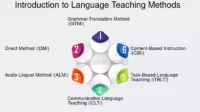Kebiasaan dan pendapat milenial terhadap periklanan digital dan konvensional untuk membangun merek perusahaan rintisan.
ABSTRAK
Tujuan penelitian ini adalah untuk mengkaji pendapat kalangan millennial tentang perbandingan antara iklan digital dan iklan konvensional pada merek perusahaan rintisan lokal. Objek penelitian ini adalah pengguna sosial media dengan rentang usia 19-40 tahun yang berjumlah 150 responden. Dengan metode deskriptif-kuantitatif. Penelitian ini mengumpulkan data melalui kuisioner dan studi kepustakaan. Hasil penelitian ini adalah bahwa generasi millenial memiliki dampak yang cukup besar pada perusahaan rintisan yang memasarkan produknya dengan iklan digital.
Kata kunci: Milenial, Iklan digital, Iklan konvensional, Merek, Perusahaan rintisan.
ABSTRACT. The purpose of the study was to examine millennials’ opinions about the comparison between digital advertising and conventional advertising on local startup brands. The object of this study is social media users with an age range of 19-40 years which amounted to 150 respondents. With descriptive-quantitative methods. The study collected data through questionnaires and literature studies. The result of this study is that millennials have a considerable impact on startups that market their products with digital advertising.
Keywords: Millennial, Digital advertising, Conventional Advertise, Brand, Start-up.
PENDAHULUAN
This research originated from the number of small businesses that market their products through digital advertising in the environment of researchers who are millennials. The reason why researchers conduct research related to millennial opinions on digital and conventional advertising is that millennials nowadays often buy products online and at the same time small businesses market their products online. According to Urban opinion is to use the internet and information technology to expand and enhance traditional marketing functions. This definition concentrates on all traditional marketing. We can also state that opinions such as “interactive marketing”, one-to-one marketing and “e-marketing” are closely related to “digital marketing” (Urban, 2004). These are some of the studies done before. From the research results, most of the Millennial Generation are the ideal target for economic profit growth in Indonesia, likes online advertising with a high level of entertainment and in formativeness and high credibility. Therefore, the company can create online advertising by combining elements of entertainment, knowledge and beliefs to attract and retain consumers’ attention. Although the findings in this study indicate that irritation and incentive factors do not significantly relate to consumer attitudes towards online advertising, but not significantly such companies may ignore this criterion in their advertisements. Irritation and incentive an online advertisement may not have an impact on consumer attitudes, but it can have an impact on marketing strategy and corporate image (Elvani Marcelin P., -).
The study concludes that digital marketing is recognized as a creative and efficient way of obtaining, sustaining, and establishing customer relationships. Online channels and platforms, such as websites, industry-specific outlets, and forums, have been identified to be the most beneficial for start-ups. It also suggests that a fresh start-up can develop substantially through digital marketing by creating brand awareness, building trust, and building consumer awareness. However, most of the start-up companies hesitate to implement digital marketing strategies at the beginning of the company’s establishment (Ali Akeel, 2020).
Read More: Analysis of Code Of Ethics Violations in News Articles at Indonesian Online Newspapers
In fact, the boundaries between new and conventional media are blurring. With continuous advancements in web-surfing and broadcasting technology, the creative and entertainment edges that conventional media enjoy over new media may soon disappear. By then, conventional advertising may face a formidable challenge (Terri H. Chan, 2015). The evolution of media plays an important role in influencing the shift. Traditional advertising concept towards digital advertising. Advertisements in traditional media such as electronics and print media are considered less efficient because they require a pretty big budget. Advertising in online media is admittedly cheaper than traditional media, both production costs and placement costs in these media (Ade Kusuma, 2020).
Indeed, the 2010 Millward Brown survey reported 96% of members in the World Federation of Advertisers are stepping up their efforts in the media social. But among them, 50% are unsure about the return on investment and only some companies are clearly defining their new media strategies (Bughin, 2011). Many advertisers have either increased their spending on digital media, or have switched from traditional media as they believe interactive advertising on the internet, mobile phones, and social networks is more effective and efficient, given the rising cost of traditional media. However, such a shift does not necessarily mean that traditional advertising would fade away in the near future. Many studies have indicated that digital advertising works in conjunction with TV, print, and other traditional media to generate a greater increase in marketing effectiveness (Koetsier, 2014).
The aim of this study is to find out the impact of millennial habits have a big impact on start-up companies. This research question is how does millennials with digital advertising have a huge impact on start-up? There are several benefits that are expected from researchers the results of this study can be used to find out the opinions, habits or influence of millennials in advertising on startup companies so that startups can consider things that are in accordance with their marketing targets and then this study is expected to provide knowledge about the role and function of conventional advertising in the digital era to give consideration to the public.
Researchers hope that digital advertising can complement the function of conventional advertising so that Indonesia’s economic growth will develop rapidly due to the contribution of small businesses that continues to grow. From the explanation of the problem above, the writer decides that Millennials on Digital or Conventional Advertising for Local Start-up Brands are the focus of this research and this research is different from previous studies because of the focus.
METODOLOGI PENELITIAN
This study “Millenial Opinion on Digital or Conventional Advertisement for Local Start-up Brand” was conducted using a questionnaire method and uses theory in quantitative research, which is used as the idea of constructs (or variables) that are interconnected with the results of research data, which are in accordance with propositions or hypotheses that detail the relationship between variables. Survey selection as a research method in this study is based on the consideration that the survey has the capability to collect and analyze data in a detailed, structured, and obtain information from a large number of respondents (Berger, 2000).
Read More: The Correlation between Students’ Writing Ability and Their Vocabulary Mastery
According to De Vaus (1991:5-6), a survey describes the characteristics of the data. The survey can be used to provide an overview of existing data and trends. In this case, the survey can explain how many respondents are involved in the research, what are their characteristics, how many percent have undergraduate education, and so on. In opinion polls, surveys can describe the tendency of public attitudes towards a particular issue. This questionnaire consists of 6 multiple choice questions and 2 short essay question items. The distribution of the questionnaire was carried out directly by the author. The author distributes questionnaires by utilizing social media, specifically Whatsapp, Instagram, and Telegram. The questionnaire was filled out for seven days, starting from October 6, 2021, to October 12, 2021. This survey is aimed at the millennial generation who are currently 19-40 years old in the Jabodetabek area, totaling 150 respondents. There are several criteria for respondents to get accurate results in this survey. Respondents must be active in social media and have purchased products online. And the final result will be drawn in conclusion based on the series of activities.
HASIL DAN PEMBAHASAN
This survey method is quantitative and descriptive in which the data generated will be in the form of numbers and descriptions of opinions. This survey aims to find out the opinions, habits and influence of millennials on digital and conventional advertising in startups then find out the role and function of a conventional advertisement in digital era. Based on the objectives, data collection was carried out using a questionnaire with 150 millennial generation respondents.
The author has summarized the results of distributing the questionnaires in table 1 which shows the number of questionnaires that can be used in this study. Overall, the target respondents are 200 respondents, and from that number, the total respondents obtained are 150 respondents. Three of them were declared invalid because the respondents did not belong to the millennial generation. Based on this, the total questionnaires that can be processed and analyzed further for this research are 147 respondents. respondents who come from various obstacles ranging from students, students, workers, and others. We hope that this analysis will be an accurate analysis, because the respondents are quite large.
Table 1. Questionnaire Distribution Results, 2021

After the authors carried out data processing, an analysis of each question contained in the questionnaire was obtained, including:
Characteristics of Respondent
Characteristics of respondents in this study include gender, age and profession. The author has summarized the characteristics of the respondents in detail, which is shown in table 2.
Table 2. Characteristics of Respondents, 2021

As shown in table 2 shows that there are 150 respondents who have filled out the questionnaire, there are 49 male respondents with 32,6% percentage and 101 females who filled out the questionnaire with 67,3% percentage, from various ages ranging from 16 years old 1 people with 0,6% percentage, 19 to 25 years 103 person with 68,6% percentage, 26 to 40 years 44 people with 29,3% percentage, 40 to 45 years 2 people with 1,3%% percentage. They are all from various backgrounds and professions, 87 students with 58% percentage, 52 employees with 34,6% percentage and 11 other occupations with 7,3% percentage.
Survey Result
As for the results of processing the questionnaire data obtained, the authors process it into quantitative data and divide it into several tables that show millennial opinions related to digital and conventional advertising and their influence on startup brands.
In our questionnaire, we ask questions about online advertisements that appear while surfing the internet that are considered intrusive. Based on the demographic data of respondents obtained from 147 respondents. This shows that 80 respondents felt disturbed, 51 respondents felt normal, 16 respondents felt undisturbed. The percentage of respondents’ demographic data based on millennial opinions can be seen in the Pie Chart below:

The results of the next survey are about the effectiveness of digital advertising in targeting the market. of 147 respondents indicated that, 62 respondents answered that digital advertising can provide the information needed and provide product info easily (effective), 70 respondents feel that digital advertising is not always effective, and 15 respondents feel that digital advertising; ineffective. The percentage of respondents’ demographic data based on millennial opinions can be seen in the Pie Chart below:

The content of the next survey that the author has conducted is to identify how often millennials use digital advertising as a reference for shopping. From 147 respondents indicated that 46 respondents often use digital advertising as a reference in shopping, 71 respondents stated that they rarely use digital advertising as a reference when shopping and 30 respondents stated never. The percentage of respondents’ demographic data based on millennial opinions can be seen in the Pie Chart below:

In the next questionnaire, we asked about social media as a potential platform for advertising. From 147 respondents indicated that 126 respondents strongly agree that social media is a potential platform for advertising, 19 respondents quite agree and 2 respondents disagree. The percentage of respondents’ demographic data based on millennial opinions can be seen in the Pie Chart below:

In the next questionnaire, the author asks “how do you usually know about a product?” and the results of 147 respondents all stated that from digital advertising no one chose conventional advertising in this regard. This is the pie chart:

the author asks about the balance and correlation in the use of conventional and digital advertising. From the total respondents, namely 147, 38 respondents feel that the level of use of conventional and digital advertising is still balanced and complementary. 73 respondents had doubts and 36 respondents feel that the use of conventional advertising and digital advertising is not balanced and does not complement each other. This is the Pie Chart:

The author also provides 2 short essays and the first question the author asks is about the presentation of advertisements expected by the millennial generation. The author has summarized all of the respondents’ answers, namely: Millennials want advertisements that are interesting, short, concise and clear, provide information while educating the public and provide creative and innovative visuals. Then the author asked about the opinion of the millennial generation if gadgets became the biggest advertising center in the future. The following is a summary of the respondents’ answers regarding a short essay on this matter. Most feel it is okay and strongly agree that gadgets will become an advertising center in the future because according to them it is something that is easily accessible, especially now that this is a digital era and most importantly it does not cost a lot and is effective in determining the target market and can reach a wider market. This can reduce media waste such as newspapers, brochures, banners, billboards, etc. due to conventional advertising. However, some of them still want regulation so that there will be no significant negative effects and still consider the negative effects of digitalization for the public.
Discussion

Based on research data, most of the millennial generation are disturbed by digital advertising. Robin said users are most bothered by intrusive ads (ads that appear without the permission of the website owner), targeting ads, and mobile ads. They can tolerate advertisements delivered via electronic messages and advertisements on search engines. According to Robin, the most annoying ads, if sorted, are intrusive ads, targeting ads, mobile ads, floating ads, and display ads (display ads on websites), video pre-roll ads, ads on YouTube, and ads on social media (Tempo, 2016). According to Ayu Saraswati in her thesis, pop-up advertising is one of the avoided ads, internet users prefer to click the close button on the ads. Based on the data obtained, the findings in this study related to the factors that cause pop-up ads to be avoided are (1) Bad myths and concerns about pop-up ads. (2) Advertising messages are less relevant. (3) The appearance of pop-up ads repeatedly. (4) Lack of patents and lack of knowledge of internet users and informants regarding regulations regarding advertising on the internet. (5) The impact of advertisements that are not liked or even hated will affect the public the brand or product that is being broadcast (Saraswati, 2014). The author agrees with what Robin and Ayu stated that there are several types of digital advertisements that annoy users, so startups need to reconsider the types of digital advertising to use.
Read More: Does A Graduate Student from Education Program Have To Be A Teacher?
Millennials think that digital advertising is effective in determining the target market, but as many as 48% of them say that it is not always effective then 86% of millennials agree that social media is a potential platform for advertising. Social media is an online medium used with each other that users can easily participate in, interact, share, and create the content of blogs, social networks, wikis, forums and virtual worlds without being limited by space and time. (Wikipedia, 2021) Zarrella argues that social media has many forms, but for marketing purposes there are 8 types of social media forms that are most widely used, namely: First, Blogs; Is a website whose content is in the form of writings that are the opinion of the blog owner (Chandra, 2011). Of Indonesia’s total population of 274.9 million people, active social media users reached 170 million. According to reports, the time spent by WhatsApp users in Indonesia is about 30.8 hours per month, Facebook 17 hours per month, Instagram 17 hours per month, TikTok 13.8 hours per month then Twitter 8.1 hours per month (Stephanie, 2021). Although social media is very potential to be an advertising platform, but the author thinks that there are some things that need to be considered further as millennials have stated in the survey in the form of a short essay. Startups need to consider the target market, make sure the content they create is relevant to the business brand, and understand social media algorithms. Because in digital advertising it becomes a unity.
100% of millennials stated that they know a product from digital advertising and only 21% of millennials do not use digital advertising as a reference. If you compare the extent to which the effectiveness of online and offline marketing can be seen in the targets and profits reached. Seeing this, online marketing is more effective, because the target consumers reach more broadly so that the benefits are also more. In addition, online marketing does not require large costs. Unlike offline marketing, which requires business actors to drain their pockets deeper to open shops, make brochures, and advertise. In online marketing, it also benefits consumers because they can place orders and purchases anywhere and anytime. Even indirectly, online marketing also opens up business fields in all circles (Arni, 2019). Compared to conventional media, the ease and speed of the internet becomes an attraction in itself. In addition, affordable costs and new media efficiency are very easy, in addition to high community mobility. So it’s no wonder that millennials prefer to access information using the internet.
Globalization is becoming a phenomenon for the world community. Therefore, the fate of conventional media is also a big question mark in the future. Because some media figures predicted that conventional media is almost dead at this time. Digitalization of media itself brought a very big change, even the boss of Jawa Pos, Dahlan Iskan, said the fate of conventional media in this case print media is almost complete (Amri, 2013). This is not without reason, in Indonesia itself internet users are getting massive and the burden of conventional media production is quite costly. But conventional media will still exist, but as the millennial generation grows, it is certain that the number of print media users itself will not be as large as in recent years. The habit of millennials who want instant things and do not want to be complicated, should be the attention of mass media companies. However, there is still a market for connoisseurs of conventional media itself. Because according to Nielsen research in 2017, radio listeners are still about 37 percent or about 20.2 million residents in 11 Indonesian cities with a radio listening duration of about 129 minutes per day. Not to mention its advertising spending which reached 900 billion (Prasetya, 2020).
SIMPULAN
This research shows that millennials who are close to social media and live in tandem with technological advances have a role while influencing the development of small businesses or startups in digital marketing. The opinions and habits of millennials are able to build brand awareness and marketing of startups through the use of digital advertising that is considered effective and does not cost much. Therefore, marketing through digital advertising is the best solution for startups that are building product brand awareness but still need to pay attention to strategies in digital advertising marketing.
DAFTAR PUSTAKA
Ade Kusuma, A. P. (2020). Apakah Media Online Lebih Populer Dibandingkan Media Tradisional? Jurnal ilmu komunikasi UPN Veteran Jawa Timur, 9.
Ali Akeel, M. G. (2020). Digital Marketing and its effects on Start-up . University of Gavle, 56.
Amri, A. B. (2013). Dahlan Iskan: Era media cetak hampir selesai. kontan.co.id.
Arni, U. D. (2019). Perbedaan Efektivitas Pemasaran Online Dan Pemasaran Offline. -: garudacyber.co.id.
Barata Krisna, S. (2020). Upaya Komunikasi Pemasaran Start-Up Pada Pt.Moka Indonesia. Jurnal Penelitian Komunikasi, 249-256.
Berger, A. A. (2000). Media and Communication Research Methods. Los Angeles: Sage publication.
Blair, O. (2017, April Tuesday). Independent.co.uk. Diambil kembali dari https://independent.co.uk: https://www.independent.co.uk/life-style/millennials-generation-z-linksters-what-next-generation-x-baby-boomers-internet-social-media-technology-a7677001.html
Bughin, A. B. (2011). Bagaimana teknologi sosial memperluas organisasi. McKinsey Quarterly, 10.
Chandra, R. (2011). Pengaruh Penggunaan Social Media Berbasis Teknologi Web 2.0 terhadap Keefektifan Komunikasi Pemasaran Pada Komunitas Adination of Runners Indonesia. Universitas Bina Nusantara.
Elvani Marcelin P., (-). Sikap Pelanggan Millennial Indonesia Terhadap Iklan Online. https://journal.prasetiyamulya.ac.id, 19.
Koetsier, J. (2014). Digital advertising hits $43B, passing broadcast TV for the first time ever. . Internet Advertising , 10.
Prasetya, A. (2020). Kemana Arah Langkah Media Massa Konvensional di era 4.0? pesan dan kanal.
Saraswati, A. (2014). Analisis Faktor-Faktor Yang Menyebabkan Iklan Pop-Up Dihindari. Skripsi jurusan ilmu komunikasi FISIP Universitas Diponegoro, 18.
stephanie, C. (2021). Berapa Lama Orang Indonesia Akses Internet dan Medsos Setiap Hari? Kompas.com.
Sweeney, R. (2006). Millennial Behaviors & Demographics. University Librarian, New Jersey Institute of Technology, 10.
Tempo. (2016). Ini Jenis Iklan Paling Mengganggu di Media Online. Tabloidbintang.com.
Terri H. Chan, B. F. (2015). Role of conventional ads in a digital age. International Journal of Electronic Commerce Studies, 12.
Urban, G. (2004). Digital marketing strategy. Pearson Educattion, Upper Saddie River, New Jersey.
Wikipedia. (2021, Agustus 6). Media sosial. Diambil kembali dari wikipedia: https://id.wikipedia.org/wiki/Media_sosial.
Nurul Sayyidah Hapidoh
Dara Mardotilah
Siti Nuraisah
Mahasiswa UIN Syarif Hidayatullah Jakarta
Editor: Diana Pratiwi















